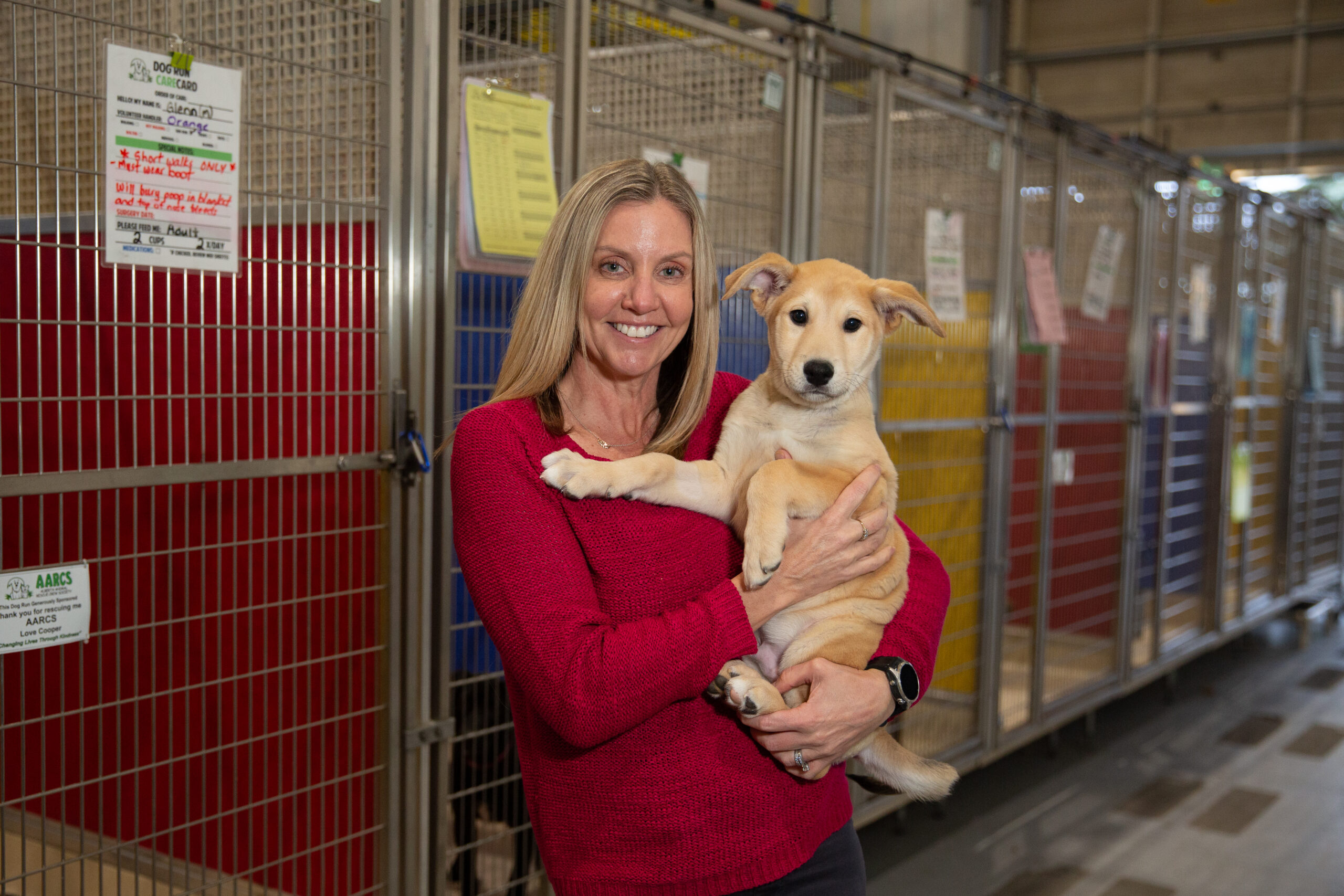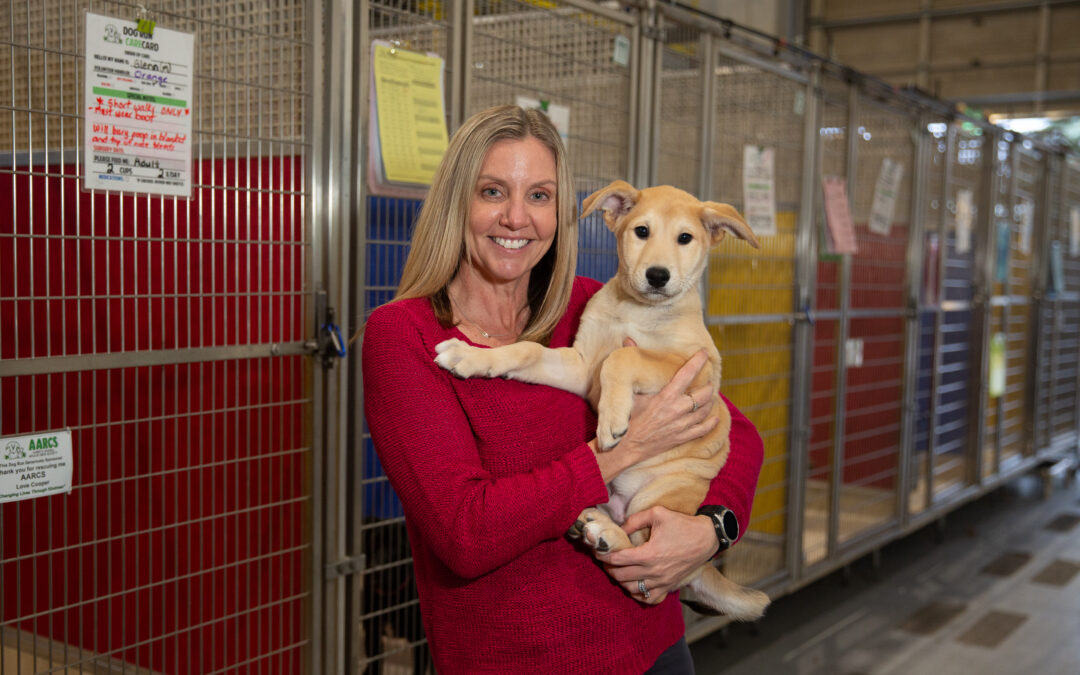Charitable Choices: Calgary Guardian Interview with AARCS Executive Director Deanna Thompson

Original article by Shantelle Canzanese, Calgary Guardian
Alberta Animal Rescue Crew Society (AARCS) Executive Director, Deanna Thompson, recently connected with the Calgary Guardian for an interview about AARCS and the world of animal welfare. Read the highlights below or check out the full article here!
The Alberta Animal Rescue Crew Society (AARCS) is a leading animal welfare organization dedicated to rescuing homeless, abandoned, and neglected animals across Alberta while providing essential community support programs to tackle the root causes of animal overpopulation. Through its shelter, foster network, and in-house veterinary hospital, AARCS offers a safe haven and life-saving medical care to thousands of animals each year.
We spoke with Deanna Thompson, Executive Director of AARCS, to learn more about the organization’s mission, the impact of its rescue and rehabilitation efforts, and how it continues to create a compassionate world for all animals.
What was the situation like [in animal welfare] when you started?
Shelters and rescue organizations faced significant challenges 20 years ago, including limited funding, overcrowding, high euthanasia rates, and large stray populations in rural areas due to a lack of spay and neutering. Public awareness around responsible pet ownership, such as the importance of spaying/neutering, regular veterinary care, and mental and physical enrichment, was not as widespread as today. Over the years we saw improvements with more people choosing adoption and getting proper veterinary care for their pets. Pets have become more like family than just a dog or just a cat. We were seeing improvements and the pandemic was the height when we couldn’t keep pets in shelters as they were being adopted so quickly. Sadly, it didn’t last and progress in improving animal welfare has fallen in recent years.
How has it changed since?
It got better for several years, but post-pandemic has seen a shift back with fewer people spaying and neutering (likely due to costs), more strays than in previous years and higher surrender rates. During the pandemic, many people adopted or purchased pets for companionship, leading to a surge in adoptions and fostering. However, post-pandemic, shelters have faced an increase in pet surrenders as financial challenges, overbreeding and lifestyle changes emerged. Shelters and rescues now struggle with higher demand and reduced donations.
On a positive note, community-based programs like pet food banks and low-cost veterinary services have become more prevalent to help families keep their pets, which is great news! While challenges remain, the pandemic ultimately brought a heightened awareness that animals are a great source of companionship for people and that their needs and well-being are important.
What more needs to be done?
Stronger enforcement of animal protection laws is essential to address neglect, abuse, and unethical breeding practices. Increased funding and support for shelters and rescue organizations are vital to help us manage rising demands, improve facilities, and provide critical services like low-cost veterinary care. It’s important we work on collaboration between governments, animal welfare organizations, and communities to create a more unified approach to animal welfare, including animal disaster response. By continuing to advocate for animals and investing in education, legislation, and resources, we can create a society where all animals are treated with respect and compassion.

